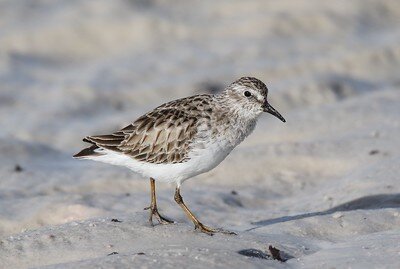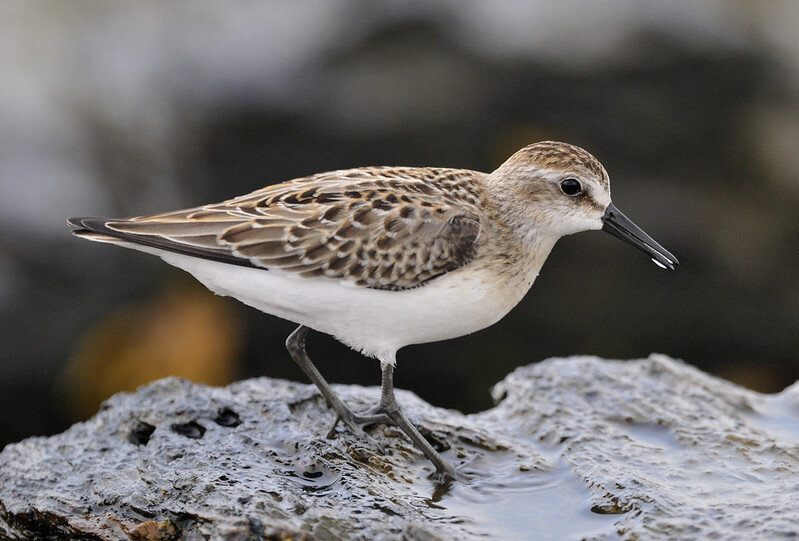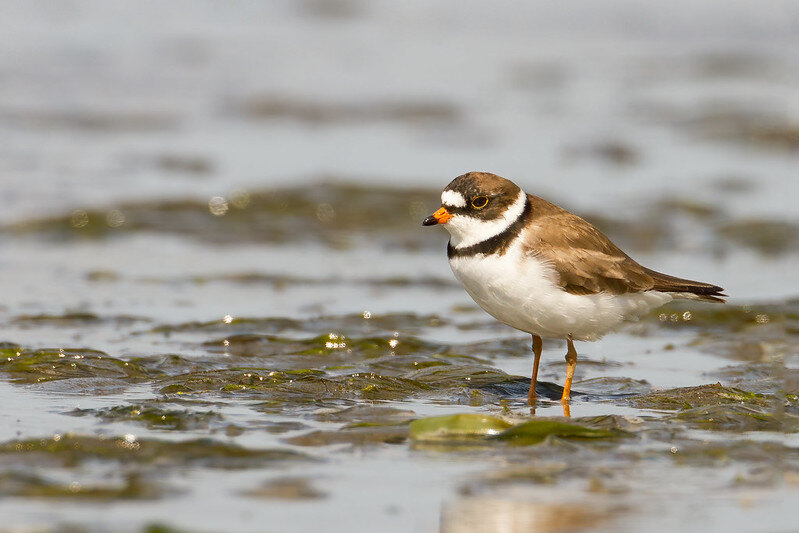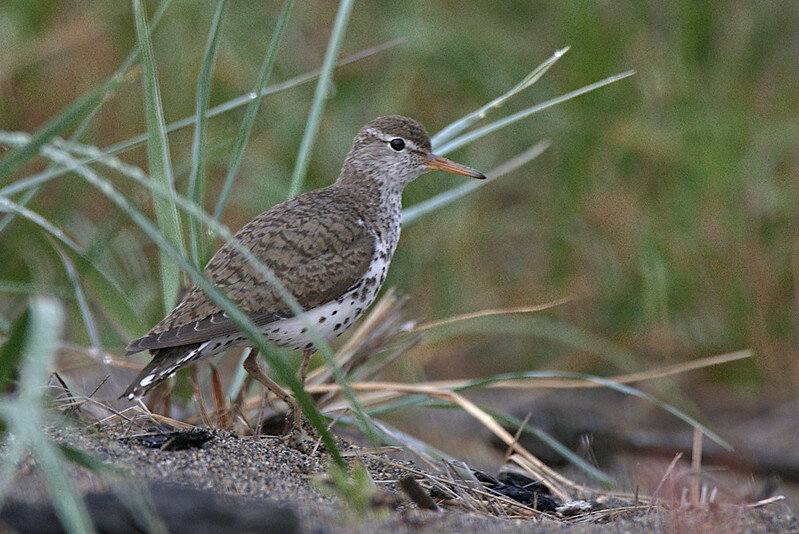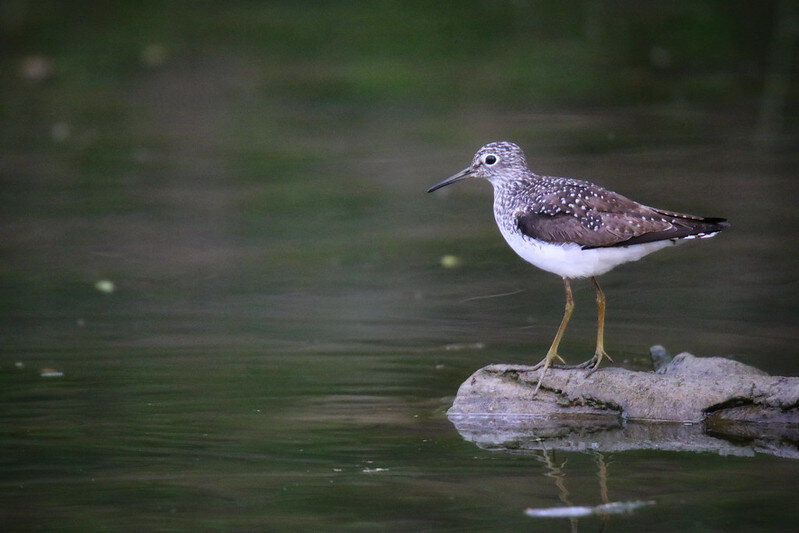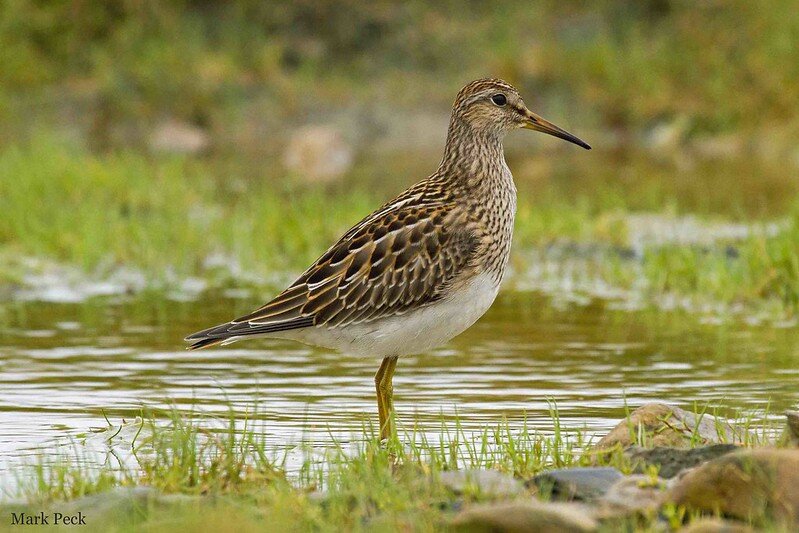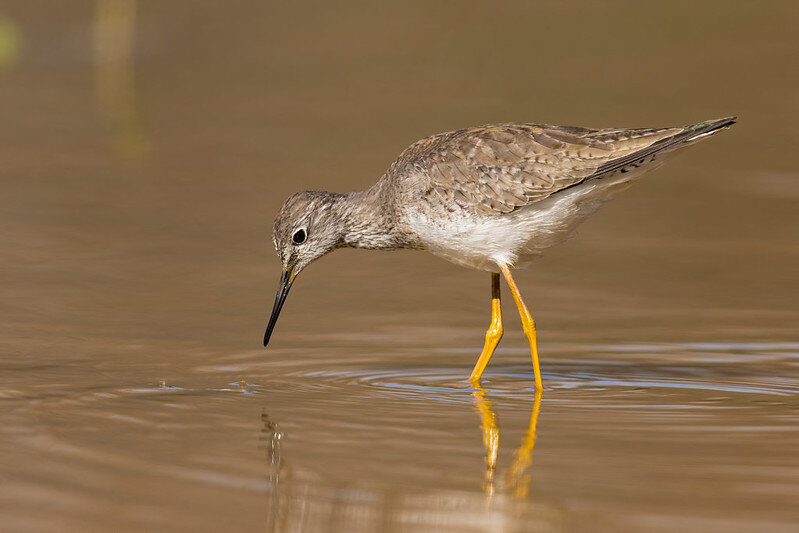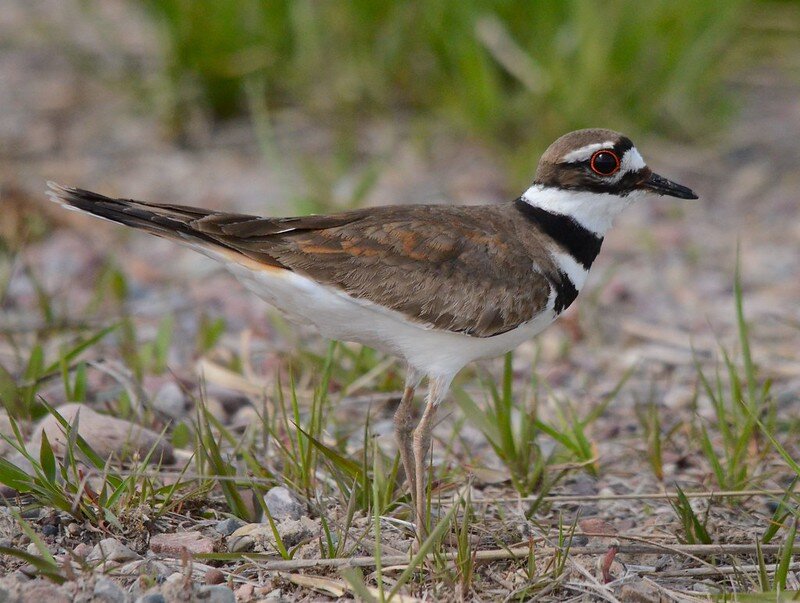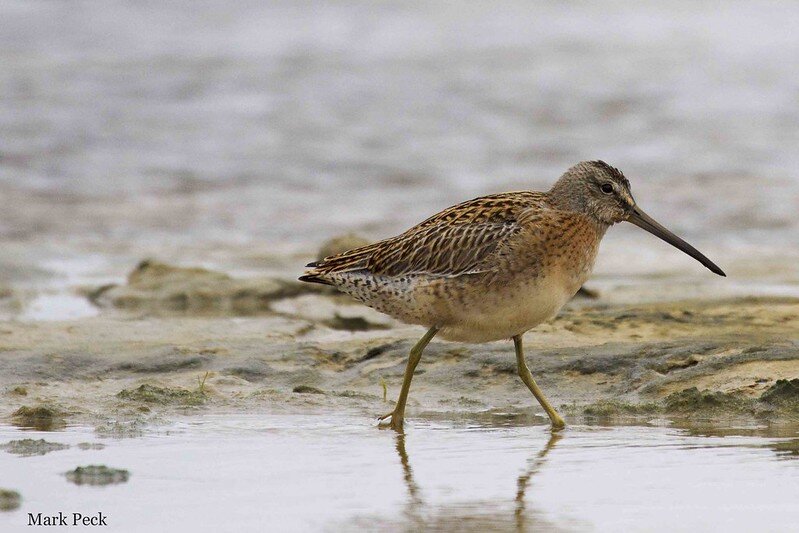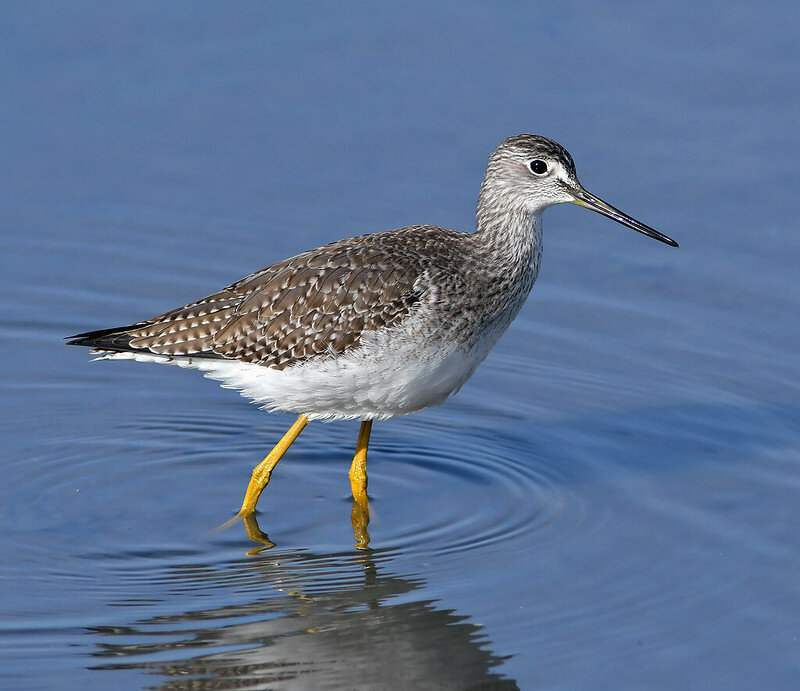Identifying birds is hard. No matter the species, no matter the time of year—it’s a challenge. The right bird but the wrong lighting conditions can fool even an expert birder, but us newbies? Oof, sometimes it feels like we don’t even have a chance.
Every season, it seems like there are new arrivals destined to fool us, again and again. Right now, it’s shorebirds. In the few months that they’ve been gone, it feels like everything that I learned about shorebird ID migrated north with them. And unfortunately, it doesn’t look like my shorebird knowledge made the return trip, so I’ve had to do some studying up!
In this week’s Entryway to Birding blog, I’m going to share some of the most helpful shorebird ID tips I’ve picked up along the way. I’ll also talk through some side-by-side comparisons of some of our most common, yet confusing, shorebirds.
Let’s get started!
Tip #1 Know what to expect in your area.
Here in Wisconsin, we’ll get many eastern shorebirds you might find your field guide, but not all of them. And we certainly won’t see western species, unless something finds itself very out of range! If you’re flipping through a field guide as you work to ID shorebirds, make it easier on yourself and narrow your options from the start.
I’ve written before about how eBird’s bar charts are a useful way to get familiar with what species you can expect. Play around with the bar chart feature—enter a recent year and a location you’re interested in visiting! See what species are most common.
In the Madison area, here are some of the most common shorbs we’re seeing right now in early/mid-August. I’ve listed them in order of body length, with the smallest first. Keep in mind this isn’t an exhaustive list of all our potential visitors—just some of the most common!
Photo credits, top left to right: least sandpiper, Howard Patterson; semipalmated sandpiper, Bill Thompson; semipalmated plover, Mick Thompson; spotted sandpiper, Kevin Krebs; solitary sandpiper, Mark Moschell; pectoral sandpiper, Mark Peck; lesser yellowlegs, Mick Thompson; killdeer, Eugene Beckes; short-billed dowitcher, Mark Peck; greater yellowlegs, Doug Greenberg. All photos Creative Commons BY NC or NC-SA.
Tip #2 Don’t look at plumage. Instead look at shape.
I know, I know. It sounds counter-intuitive. Plumage (a bird’s feathers and the color/pattern of those feathers) is often what catches our eye. In many cases, it can easily set a bird apart—it’s hard to mistake the bright yellow and black of an American goldfinch in summer, for instance. But when it comes to shorebirds, their plumage can look alike and seem indistinguishable from a distance. And by the time that we’re seeing shorebirds in the fall, they’re no longer in their breeding plumage—many of our visitors are new, young birds in juvenile plumage, which makes them even trickier.
As a new birder, I really struggle to look at field marks that aren’t color or plumage. They seem like an “easy” thing that my eyes just gravitate to, but in reality I end up feeling overwhelmed trying to endlessly compare them to pictures in my field guide. It’s frustrating. I have to make a consistent effort to focus on other features, like shape, by instead starting my ID at the bill or the legs.
Why is shape so important? There are a lot of species of shorebirds and shape can drastically narrow down your list of options. In most cases, the bill will be your biggest clue. Is it long? Short? Curved upwards? Curved downwards? Each of these will point to a different category of shorebird. The legs, head size, or a bird’s elongated or compact shape can then further help you narrow down your options.
Consider printing this handy quick guide to help you narrow your options. This compact guide was created by the Cornell Bird Academy and is being offered for FREE—you just have to enter your email and you’ll receive a PDF to download. It has silhouettes of shorebird shapes, a size guide, and tips on foraging behavior! If you find this guide helpful and want even more tips, consider registering for the “Be a Better Birder: Shorebird Identification” course for a fee. I’m currently working my way through it and it’s very helpful! Photo from Cornell Bird Academy
Tip 3: Pay attention to foraging patterns and behavior.
Looking at shape alone won’t always land you on an ID. You’ll want to consider as much information about the bird as you can, and that often includes behavior. Shorebirds spend most of their time foraging in the mud, and lucky for you, their movements can help you determine which species is which.
“Peeps” (the smallest of the shorebirds) like least sandpipers and semipalmated sandpipers, will forage crouched with their head low, always walking, picking, and probing (top left on the image below). Plovers like semipalmated plover and killdeer will run and pick at food, then run and pick again (bottom right on the image below). Dowitchers will probe constantly in the mud with their long bills, which is often described like a sewing machine’s movement (bottom left on the image below). Yellowlegs will stroll along and pick at something, then keep strolling and picking as they see new food (top right of the image below).
This David Sibley illustration from the very helpful article “Keys to identifying shorebirds” is a great visualization of how certain groups of shorebirds will move as they forage.
Some birds also have unique quirks to their movements that will give you a clue to their identity too—spotted sandpipers, for instance, walk with a constant bobbing of their rear end. Solitary sandpipers will tip their whole bodies forward in a bob. And plovers, like semipalmated plovers and killdeer, will pop their heads up and down in a little “hiccup” motion.
Tip 4: Use size only as a comparison.
Judging the size of shorebirds—or of any bird in general—can be really difficult from a distance. Without something to compare it with, size is extremely deceptive. For example, least sandpipers and pectoral sandpipers have similar plumage patterns and both have yellow legs. But pectoral sandpipers are much larger than least sandpipers, which are the smallest of the sandpipers.
Both of these shorebirds are tiny compared to the mallard in the back, but the pectoral sandpiper (middle) is clearly larger than the least sandpiper (right). Notice how similar their plumage, legs, and bill can look? Try and find something like a nearby killdeer—or even a mallard!—to give you some perspective on size. Photo by Jeff Bryant CC BY-NC
So if you see a shorebird that you think looks like a least sandpiper, but you notice it’s about the size of a nearby killdeer, you’ll know that something’s amiss. It’s likely a pectoral sandpiper instead.
Killdeer are often plentiful around mudflats here in southern Wisconsin, so they are a good choice for size comparison. They are easy to identify with two rings around their neck and are a good “standard” for judging the size of other shorebirds.
Let’s Practice on Some Tricky Look-Alikes!
Shorebirds don’t often pose for comparison shots, but I was able to find some side-by-side shots to help us as we examine some of the trickier shorbs. Look carefully at the images below as I point out some key field marks relevant to shape, size, and behavior. First up, the smallest of the small — the peeps!
Least sandpiper vs. semipalmated sandpiper
These two shorebirds are small, behavior similarly, and often seem indistinguishable from a distance. Your biggest hint at distinguishing these two will be their legs. Least sandpipers have yellow-green legs, while semipalmated sandpipers have darker gray or black legs.
Legs aren’t always helpful, though, if the lighting is bad or if they’re obscured by high water. Your next clue will be the bill. While both of these birds have short, fine-tipped bills, notice how the bill on the least sandpiper droops ever so slightly while the semipalmated’s bill stays more straight. It’s subtle for sure, but it’s there.
Size is tough when you’re dealing with the smallest of the peeps side-by-side, but if we look carefully—especially when comparing the rear end of each bird—we can see that the least sandpiper is definitely smaller than the semipalmated.
Least sandpipers are the smallest shorebirds, period, so if you think you’ve got a least sandpiper but it’s bigger than another nearby shorb … that’s a sign to rethink your ID!
Greater yellowlegs vs. lesser yellowlegs
When it comes to yellowlegs, it feels like they should be obvious. The lesser is smaller, the greater is bigger—done! Well, if only it were that easy in the field. Birders don’t often have views of these birds right next to each other for an easy size comparison. The only thing that feels “easy” about these birds is when you get a nice clear view of their bright yellow legs—then you can at least narrow it down to these two options.
Without a side-by-side size comparison, bill length is going to be the determining factor here. In general, the length of the bill on the greater yellowlegs is longer than the width of the head. The length of the bill on the lesser yellowlegs is roughly the same width as the head. There’s some bird-by-bird exceptions here, as some juvenile lesser yellowlegs will have pretty long looking bills, but it’s a good rule of thumb to go by.
(A gruesome sounding tip that I’ve found surprisingly useful: imagine you are pressing the bird’s bill back into its head like you would a pin. If it’s long enough to poke out the other side of the head, it’s a greater yellowlegs.)
Now take a look at the picture on the right. When I first starting looking at shorebirds, I could pick out the bird on the left as a greater yellowlegs due to its foraging posture and bill. But the bird on the right would definitely have confused me—it’s not showing the longer neck I associated with yellowlegs as they foraged. Birds are really good at confusing you with their postures, so be aware they might not always pose just like your field guide—a longer neck can easily be concealed! Look at the bill and the legs to get your bearings.
Solitary sandpiper vs. spotted sandpiper
Sometimes you’ll find a small pond with just a single shorebird—and it will probably one of these. Spotted and solitary sandpipers can be found in larger groups, sure, but they aren’t big as big on crowds as some other species.
If you do encounter one of these solo, it can be hard to distinguish them—especially if the spotted sandpiper is a juvenile or in non-breeding plumage without its characteristic spots! Notice that the bill on the spotted sandpiper has some orange on it, whereas the solitary sandpiper has a black and gray bill. The solitary’s bill is also slightly longer than the spotted sandpiper’s.
That’s one clue, but the most obvious distinguisher between these two is two is behavior—the spotted sandpiper will repeatedly bob its rear end up and down as it moves. You might see the solitary sandpiper do some bobbing too, but they bob differently—they tip their whole bodies forward in a bob, instead of pumping their tail.
Still not sure? Plumage can help you out here! The solitary sandpiper has “eyeglasses”—notice the white ring around the eyes that extends to the bill. The spotted sandpiper lacks those glasses in favor of a strong “eyebrow”—notice the white stripe above the eye (also called a supercilium).
If you’ve been struggling with shorebirds, don’t fret. You are not alone! I struggle with them literally every time I look at them. The lighting is always different, they’re moving so fast, they’re too far away, the list of frustrations goes on. Sometimes I give up without having ID’d anything—and that’s okay! I’ve still spent time looking at some really neat, cool birds that are in the midst of a long journey, and that makes me happy.
A group of shorebirds (mostly lesser yellowlegs) forage at the Patton/Oak pond. Photo by Caitlyn Schuchhardt
If you’re looking for a quiet spot to observe some shorebirds, you should try visiting Oregon business park off Cusick Parkway, near a flooded field just off the start of the Oregon Rotary Trail. There’s little traffic, a safe place to view off the road, and plenty of parking. The birds can often get close enough for great views with just binoculars, too.
If you’re on the north side of town, consider checking out the intersection of Patton Rd and Oak Ln, which has been a good spot for lots of shorebirds recently—as well as great egrets and great blue herons. The birds tend to be further away at this location than at Oregon business park, so you may need a scope. It’s worth checking out if you are in the area, though!
The best advice for those tricky birds is to practice, practice, practice. The more IDs you work through, the more those field marks will stick in your brain.
Happy birding, friends. See you next week!
____
Caitlyn is the Communications and Outreach Assistant at Madison Audubon. She’s crazy for birds because they changed her life. She’ll be back next Monday with some tips and tools for birders, new and experienced! Between now and then, she’d love to hear about the birds you’re seeing and hearing. Leave a comment below or email to drop her a line!



